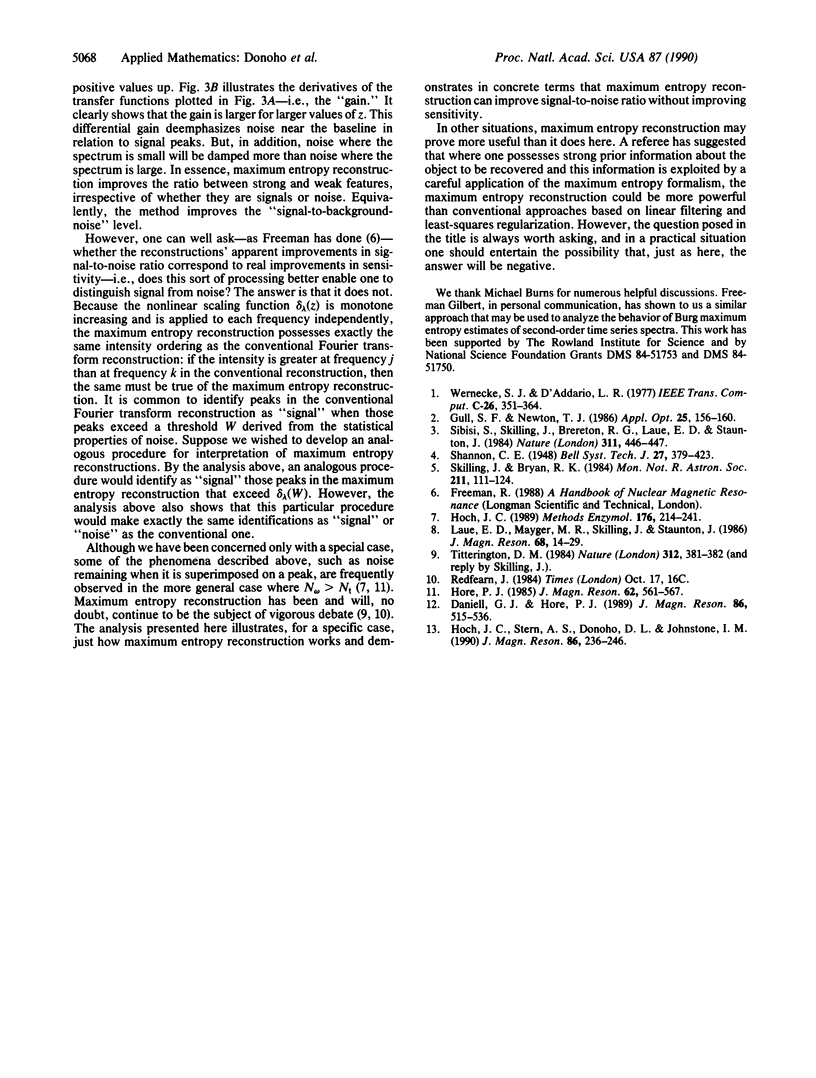Abstract
Maximum entropy reconstruction has been used in several fields to produce visually striking reconstructions of positive objects (images, densities, spectra) from noisy, indirect measurements. In magnetic resonance spectroscopy, this technique is notable for its apparent noise suppression and its avoidance of the artifacts that affect discrete Fourier transform spectra of short (zero-extended) data records. In the general case where the length of the reconstructed spectrum exceeds that of the data record or where a convolution kernel is incorporated in the reconstruction, no known analytical solution to the reconstruction problem exists. Consequently, knowledge of the properties of maximum entropy reconstruction has been mainly anecdotal, based on a small selection of published reconstructions. However, in the limiting case where the lengths of the reconstructed spectrum and the data record are the same and a convolution kernel is not applied, the problem can be solved analytically. The solution has a simple structure that helps explain several commonly observed features of maximum entropy reconstructions--for example, the biases in the recovered intensities and the fact that noise near the baseline is more successfully suppressed than is noise superimposed on broad features in the spectrum. The solution also shows that the noise suppression offered by maximum entropy reconstruction could (in this special case) be equally well obtained by a "cosmetic" device: simply displaying the conventional Fourier transform reconstruction using a certain nonlinear plotting scale for the vertical (y) coordinate.
Full text
PDF


Selected References
These references are in PubMed. This may not be the complete list of references from this article.
- Hoch J. C. Modern spectrum analysis in nuclear magnetic resonance: alternatives to the Fourier transform. Methods Enzymol. 1989;176:216–241. doi: 10.1016/0076-6879(89)76014-6. [DOI] [PubMed] [Google Scholar]


